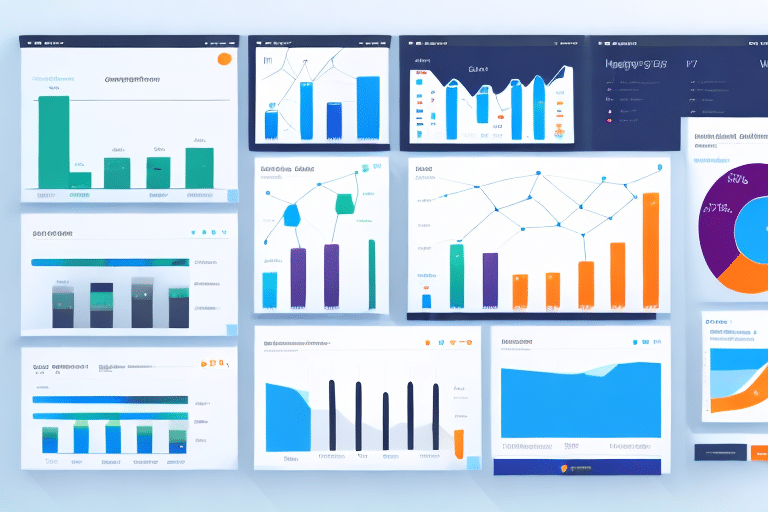Comparing Critical E-Commerce Operations Metrics: ROAS vs Revenue by Traffic Source
In today's digital landscape, effectively measuring e-commerce metrics is paramount to the long-term success of any business. Whether operating an online store, a physical storefront, or a hybrid of both, understanding key e-commerce metrics can significantly influence operational strategies and outcomes. This article delves into two essential e-commerce metrics: Return on Advertising Spend (ROAS) and Revenue by Traffic Source, providing a comprehensive comparison to help you determine which metric aligns best with your business model.
The Importance of Measuring E-Commerce Metrics
Tracking e-commerce metrics offers invaluable insights into a business's performance and profitability. These metrics enable business owners to pinpoint areas that require improvement and make strategic decisions regarding resource allocation. Key benefits of measuring e-commerce metrics include:
- Monitoring sales performance
- Identifying traffic patterns and better targeting customers
- Assessing the effectiveness of advertising programs
- Managing inventory levels and optimizing reorder points
- Enhancing customer experience and monitoring satisfaction
For instance, according to a 2023 Shopify report, businesses that consistently track and analyze their metrics are 30% more likely to experience sustained growth compared to those that do not.
Among the most critical e-commerce metrics are the conversion rate and average order value. The conversion rate indicates the percentage of website visitors who make a purchase, highlighting potential areas for website optimization. Meanwhile, the average order value provides insights into opportunities for increasing revenue through encouraging customers to purchase more items or higher-priced products.
Understanding Key Metrics: ROAS and Revenue by Traffic Source
Return on Advertising Spend (ROAS)
ROAS is a financial metric that evaluates the revenue generated for every dollar spent on advertising. It is a fundamental metric in e-commerce for assessing the effectiveness of marketing campaigns. ROAS is calculated by dividing the total revenue from a specific campaign by the total advertising expenditure on that campaign.
For example, if a campaign generates $10,000 in revenue and costs $2,000, the ROAS would be 5:1. This indicates that for every dollar spent on advertising, the business earns five dollars in return.
It's important to distinguish ROAS from Return on Investment (ROI). While ROAS focuses solely on advertising revenue relative to ad spend, ROI encompasses all business expenses, including overheads, providing a more comprehensive financial picture.
Revenue by Traffic Source
Revenue by Traffic Source measures the amount of revenue generated from various traffic channels such as organic search, paid search, email marketing, referrals, and social media. This metric helps businesses understand which channels are most effective in driving sales and can inform strategic decisions on where to allocate marketing resources.
For example, a study by Digital Marketing Institute in 2023 found that businesses that prioritized high-revenue traffic sources saw a 25% increase in overall sales compared to those that did not.
Calculating ROAS and Revenue by Traffic Source
How to Calculate ROAS
ROAS is calculated using the following formula:
ROAS = Revenue from Advertising Campaign / Cost of Advertising Campaign
For instance, if an advertising campaign costs $1,500 and generates $7,500 in revenue, the ROAS would be 5:1.
It's crucial to remember that while a high ROAS indicates effective advertising spend, it should be analyzed alongside other metrics like ROI to get a full understanding of financial performance.
How to Calculate Revenue by Traffic Source
To determine Revenue by Traffic Source, follow these steps:
- Identify all traffic sources to your website (e.g., organic search, paid search, social media, email marketing, referrals).
- Use analytics tools like Google Analytics to track the revenue generated from each source.
- Aggregate the revenue data to assess which traffic sources contribute the most to your overall sales.
For example, if your organic search traffic generates $20,000, paid search generates $15,000, and social media generates $5,000, you can prioritize your marketing efforts accordingly.
Advantages and Limitations of Each Metric
Advantages of ROAS
- Direct Measurement: Provides a clear view of how much revenue is generated per advertising dollar.
- Campaign Optimization: Helps in identifying which advertising campaigns are most effective.
- Budget Allocation: Informs decisions on where to allocate advertising budgets for maximum returns.
Limitations of ROAS
- Narrow Focus: Does not account for other business expenses beyond advertising.
- Short-Term Metric: May not reflect long-term customer value and retention.
- Attribution Challenges: Difficult to attribute revenue accurately in multi-channel marketing environments.
Advantages of Revenue by Traffic Source
- Comprehensive Insight: Offers a broad view of which channels drive the most sales.
- Strategic Planning: Aids in strategic marketing decisions and resource allocation.
- Customer Behavior Understanding: Helps in understanding where customers are coming from and their purchasing behavior.
Limitations of Revenue by Traffic Source
- Doesn't Measure Efficiency: Does not indicate how much is spent to generate the revenue.
- Lacks Cost Context: Without cost data, it's hard to assess the profitability of each traffic source.
- Overemphasis on Top Channels: May lead to neglecting emerging or less obvious channels that could be profitable.
Integrating ROAS and Revenue by Traffic Source for Comprehensive Analysis
While ROAS and Revenue by Traffic Source provide distinct insights, integrating both metrics offers a more holistic view of e-commerce performance. By analyzing ROAS alongside Revenue by Traffic Source, businesses can:
- Identify not only which channels generate the most revenue but also assess the efficiency of advertising spend within those channels.
- Optimize marketing strategies by balancing high-revenue channels with high-efficiency advertising spend.
- Allocate resources more effectively to channels that offer the best combination of revenue generation and advertising efficiency.
According to a 2023 MarketingProfs study, businesses that integrated these metrics saw a 20% improvement in their marketing ROI.
Best Practices and Case Studies
Best Practices for Measuring and Analyzing E-Commerce Metrics
- Define Clear Objectives: Establish what you aim to achieve with your metrics tracking.
- Consistent Data Tracking: Use reliable tools to consistently track metrics over time.
- Multi-Metric Analysis: Utilize multiple metrics to gain a well-rounded understanding of performance.
- Data Segmentation: Segment data based on customer behavior and demographics for more targeted insights.
- Monitor Trends: Keep an eye on trends and patterns to anticipate changes and adapt strategies accordingly.
Case Studies
Amazon's ROAS Optimization
E-commerce giant Amazon continually refines its ROAS by leveraging vast amounts of data to optimize its advertising spend. By analyzing ROAS across different campaigns and channels, Amazon ensures that its advertising investments yield maximum revenue.
Coca-Cola's Revenue by Traffic Source Strategy
Coca-Cola utilizes Revenue by Traffic Source to understand which marketing channels are most effective in driving sales. By identifying high-performing channels such as social media and organic search, Coca-Cola allocates more resources to these areas while reassessing less effective channels.
These case studies underscore the importance of diligently tracking and analyzing e-commerce metrics to drive business success.
Conclusion: Selecting the Right Metric for Your E-Commerce Business
Choosing between ROAS and Revenue by Traffic Source depends largely on your business model and specific goals. If your business heavily relies on digital advertising, focusing on ROAS can help optimize your advertising spend and maximize returns. Conversely, if your revenue streams are diverse across multiple traffic sources, analyzing Revenue by Traffic Source will provide deeper insights into customer acquisition and behavior patterns.
Ultimately, leveraging both metrics in tandem enables a comprehensive understanding of your e-commerce performance, facilitating informed decision-making and strategic resource allocation. By effectively measuring and analyzing these critical metrics, businesses can enhance their operational efficiency, drive sales growth, and achieve sustained success in the competitive e-commerce landscape.




















